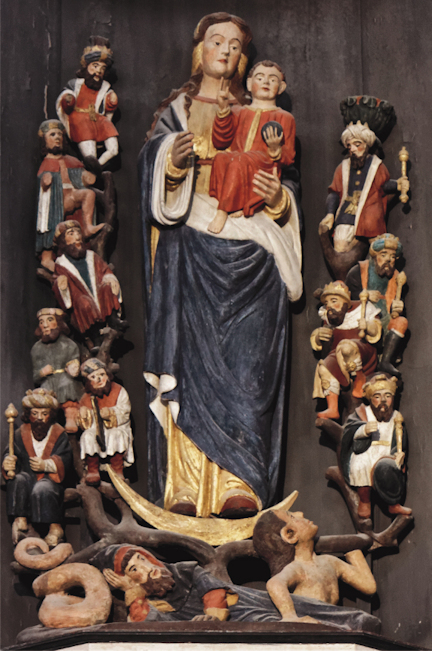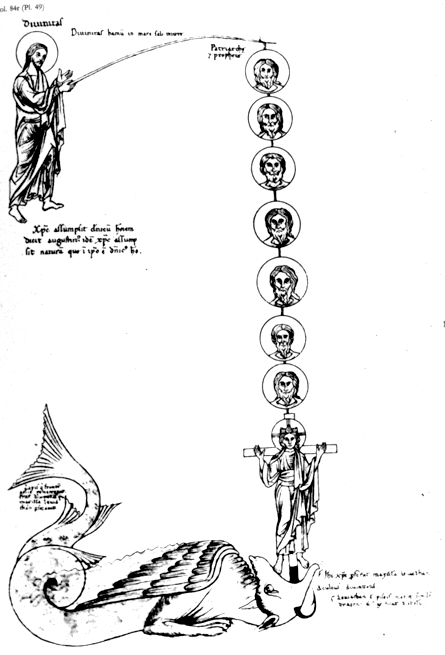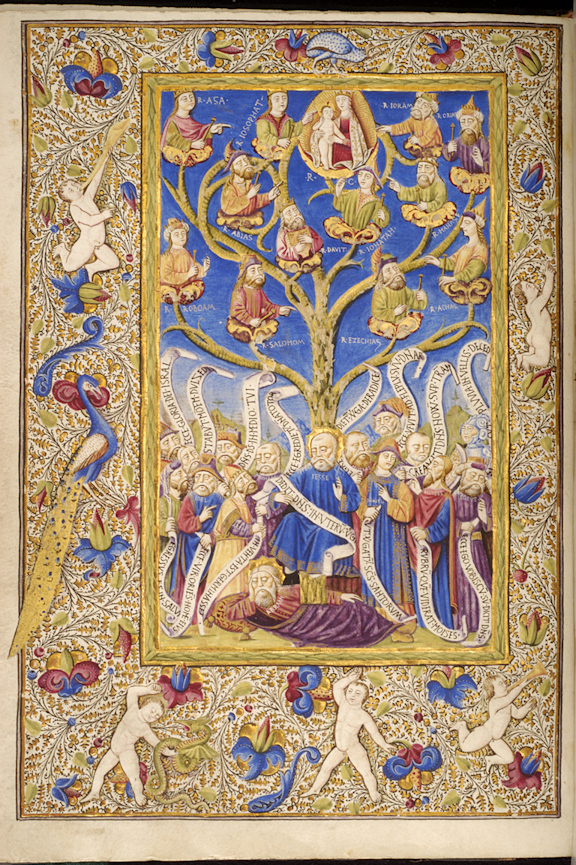TREE OF JESSE OR TREE OF LÉBÉ?
updated Sept. 20, 2023

Tree of Jesse with Nummo Serpent LébéOriginal By Thesupermat - Own work, CC BY-SA 3.0, https://commons.
wikimedia.org/w/index.php?curid=28315333 Picture cropped and reduced. Shannon Dorey, Manichaeism p. 11
Inside this shuttered niche is a breasted serpent figure with a human upper body and a serpent tailed lower body holding up the Tree of Jesse. In the Dogon religion, Lébé had a human upper body and a fish-tailed or serpent-tailed lower body like the alien Nummo. Lébé was considered the mother of humanity and although she was androgynous, five generations after her birth, humans became single sexed beings.Shannon Dorey, Manichaeism p. 11 .
This shuttered niche is found in the church of Notre-Dame at Saint-Thégonnec in Brittany built between 1563 and 1599. Shuttered niches in Medieval Churches was a way for heretic sects to hide their beliefs from the Inquisition.Dorey, Manichaeism p.10
In Christianity, a Tree of Jesse is a visual representation of the ancestry of Jesus from Jesse. Frequently Jesse is at the bottom, and Jesus is at the top. It is based on Isaiah 11.1 - "A shoot shall come out from the stump of Jesse, and a branch shall grow out of his roots"https://commons.wikimedia.org/ wiki/Tree_of_Jesse
This shuttered niche, from the church of Notre-Dame at Saint-Thégonnec in Brittany, was probably associated with the heretic Cathars or Hugenots, who probably ended up in Brittany as they were fleeing religious persecution.Dorey, Manichaeism p.10 My research indicates that they had knowledge of the Alien Nummo, and had similar religious beliefs to that of the Dogon.

Tree of Jesse Between 1167 and 1175By w:Herrad of Landsberg - [1], Public Domain,Hortus deliciarum, 1175 https://commons.wikimedia.org/w/ index.php?curid=1575946
The shuttered niche from Brittany might not be a significant factor alone to associate the serpent figure under the Tree of Jesse with the female Lébé but this other Tree of Jesse, depicts a fish on the bottom of the tree, and like the alien Nummo Lébé was described as having both serpent and fish-like characteristics. This Tree of Jesse is from the Hortus deliciarum dated between 1167 and 1175.By w:Herrad of Landsberg - [1], Public Domain,Hortus deliciarum, 1175 https://commons.wikimedia.org/w/ index.php?curid=1575946
Lébé's birth was a result of a mythical swallowing and regurgitation, which I believe is also being referenced on this drawing.Dorey, The Master (Mistress) of Speech p. 115 The fish appears to be vomiting out the figures above him or her. In the Dogon religion, humans were believed to be enlightened through their genetic association with the fish or serpent-tailed Nummo.Dorey, The Master (Mistress) of Speech p. 115
In the drawing, Christ stands on top with a fishing rod that connects with the eight figures below. These figures may represent the Eight Nummo Ancestors, who the Dogon described as being part human and Nummo. Lébé was believed to be a combination of all the Eight Ancestors.Dorey, The Nummo p. 19
According to Joseph Campbell, "The theme of fishing the fish out of the water into the light is associated with initiation." Campbell attributes it to the Greek Orpheus, who like the Nummo was androgynous.Dorey, The Master (Mistress) of Speech p. 115
Campbell also associates fishing with the Fisher King, who appears in the first Grail story by Chrétien de Troyes from the 12th century, where he is physically challenged and spends most of his time fishing. Because the Nummo only had a tail or "one leg", the Nummo had trouble moving about on land and were perceived as being physically challenged. Their world had also been destroyed, which is why they came to Earth, hence the Grail theme of the wasteland.Dorey, The Master (Mistress) of Speech p. 116
Robert Graves refers to the fact that many of the Welsh religious myths had been rewritten by the Norman-French trouvères and Malory to create the Grail stories. According to Graves, "they had no knowledge of, or interest in, the historical and religious meaning of the myths that they handled." I believe the Welsh religious beliefs paralleled Dogon beliefs.Dorey, The Nummo p. 32

Green Serpent bottom leftBy Cristoforo Majorana - Walters Art Museum: Public Domain, Naples, Italy https://commons.wikimedia.org/w/ index.php?curid=18780563 Cristoforo Majorana. Leaf from Psalter, circa 1480 Bequeathed to Walters Art Museum by Henry Walters in 1931
In this Tree of Jesse by Cristoforo Majorana, circa 1480, the fish or serpent is no longer depicted on the Tree of Jesse but subtly appears on the bottom outside of the frame to the left. The Nummo were green serpent or fish-tailed beings and here the serpent is green like the Nummo.Dorey, The Nummo p. 5
Only the busts of the people appear on the upper branches and perhaps the twirling branches were meant to represent serpent tails to the initiated. The Nummo Ancestors had human upper bodies but fish or serpent-tailed lower bodies.Dorey, The Nummo p. 35
A peacock, which is associated with the Roman Goddess Juno (Greek Hera), is also shown on the side of the picture. In the Middle Ages, the peacock was a symbol of immortality because it was believed that its flesh never decayed.Shannon Dorey, The Rose p. 372
In The Rose, I associate the peacock with the Mistress of Speech, who was immortal and identified by the Dogon people with the African blue and white donu bird.Shannon Dorey, The Rose p. 263 The androgynous Master (Mistress) of Speech, who was half fish and half human, was regarded as the saviour of humanity and the mother of Lébé.Dorey, The Master (Mistress) of Speech p. 115 In later history, the peacock became a symbol of Christ.
For more information on the Dogon religion refer to my books, The Master (Mistress) of Speech, The Nummo, Day of the Fish and The Rose.